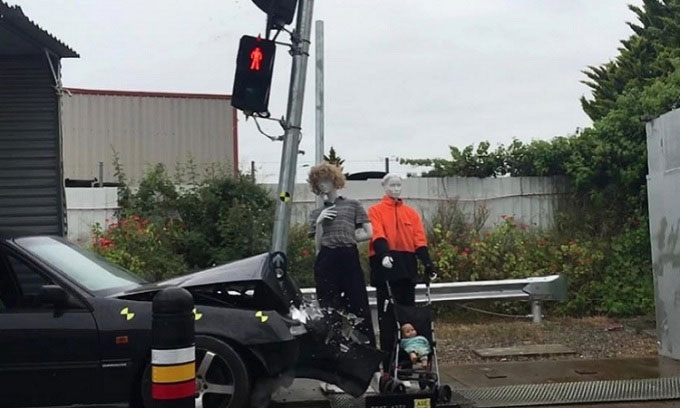Researchers have designed traffic lights that use foam to absorb impact energy from collisions, reducing the risk of injuries and damage during accidents.
When a vehicle crashes into an object at an intersection, it is often a traffic light pole. However, with the new design of energy-absorbing traffic light poles, the risk of fatalities or injuries will be significantly reduced.

Tests show that the new traffic lights lean to one side upon impact instead of collapsing onto nearby pedestrians. (Photo: University of South Australia)
Traditional traffic lights are relatively rigid and do not bend, making collisions with them potentially dangerous for drivers. Additionally, if a traffic light pole separates from its base due to a strong impact, it can fall on nearby pedestrians. A completely damaged traffic light pole will need to be replaced. Recent data indicates that in Australia, collisions with traffic light poles cost $18.5 million annually in fatalities, $53.7 million in injuries, and $16 million in repair, installation, and maintenance costs, according to Dr. Mohammad Uddin from the University of South Australia.
Considering these figures, Uddin and his colleagues collaborated with Impact Absorbing Systems to create energy-absorbing traffic light poles. These poles will integrate a system previously used in steel mooring piles that absorb energy.
In that system, the base of each pole is housed within a hollow chamber located in the concrete foundation of the pole. This chamber is cone-shaped with a diameter equivalent to the pole but wider at the top, creating a gap between the pole and the concrete layer. This gap is filled with polyurethane foam, keeping the pole upright until it is struck by a vehicle.
When an accident occurs, the foam compresses during the impact absorption process, allowing the pole to tilt to one side without breaking. Impact Absorbing Systems states that the result is that the driver and vehicle experience less impact force, and the pole sustains less damage.
Similar technology is being expanded for use in traffic light poles. Researchers hope the new poles will be ready for use this year and soon become the standard model, gradually replacing conventional traffic lights in the future, according to Uddin.


















































